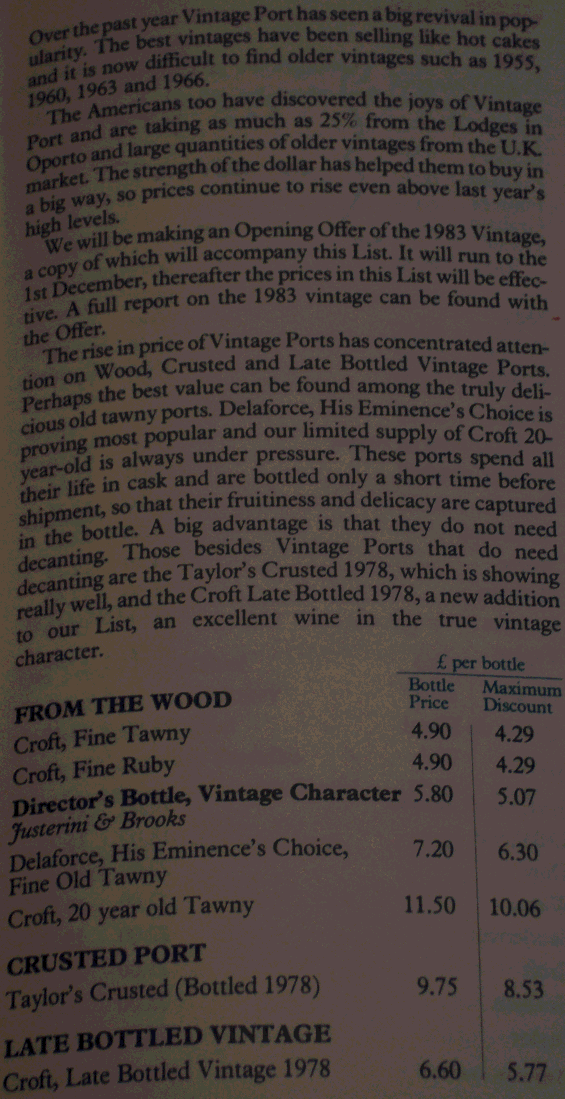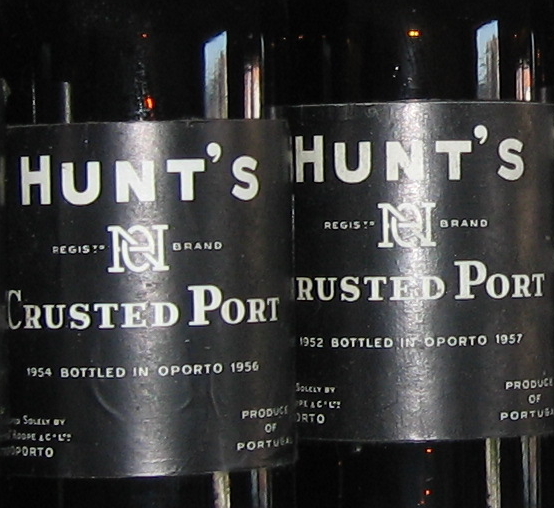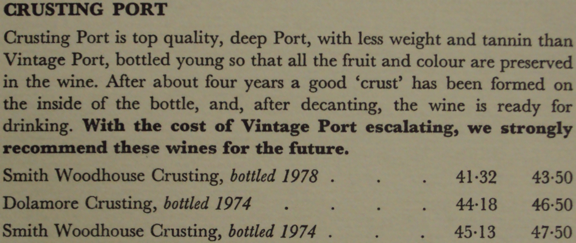
(Already on the list. Lower price is with bulk discount.)






None at all - but a tiny reference to my efforts woud be appreciated!would there be much unhappiness if it were to become a chapter in the book currently (not being) written by DRT and I?
Deal.uncle tom wrote:reference to my efforts woud be appreciated



I have no information other than the photograph. Generally Hunt Roope ≈ Tuke Holdsworth.uncle tom wrote:Can we assume these are Ferreira wines?

I had a case of 78 Taylor Crusted. Maybe 5-6 bottles left. Lot's of spearmint, kind of hot. Very sweet.jdaw1 wrote:Justerini & Brooks, Spring 1985.
(Already on the list. Lower price is with bulk discount.)

There is no evidence that Hunt Roope declared 1954 let’s call that a ‘not’.Dom Symington wrote:(I don't know if Hunt's did or not, actually declare 54, although one would assume not!)
This would suggest that the real value in all this data is to create a list of non-declared VPs, which in itself might make for an interesting tasting.Dom Symington wrote:Crusted has never included the vintage (year of vinification) but only the bottling year. If a vintage (year of vinification) is included on the label plus a bottling year it will effectivly be an LBV or non-declared vintage port.
At least at the start of LBV, it spent two years in Tonnels, and was then shipped to the UK in shipper’s pipe. So, if a style of port let’s call it Crusted has two years in Tonnel and ages in shipper’s pipe, it’s just like an LBV. But if this mysterious ‘Crusted’ stuff spends ages and ages in Tonnel, then it isn’t like an (early) LBV.DRT wrote:and read Julian's last post again to attempt to understand what he is trying to say
This raises the interesting question as to whether Crusting port (as Dom defines) could be legally sold today?The difference also one would assume is that ...ed was pre-aged by the wine merchant and that ...ing was sold on bottling for further ageing!
Ah, so you are attributing the difference to the size of the wooden cask in which the port is aged prior to bottling. I may be wrong but I don't think that is relevant. The thing that would make the difference in "style" (in an official sense) is the length of time in wood, not the size of the cask.jdaw1 wrote:At least at the start of LBV, it spent two years in Tonnels, and was then shipped to the UK in shipper’s pipe. So, if a style of port let’s call it Crusted has two years in Tonnel and ages in shipper’s pipe, it’s just like an LBV. But if this mysterious ‘Crusted’ stuff spends ages and ages in Tonnel, then it isn’t like an (early) LBV.DRT wrote:and read Julian's last post again to attempt to understand what he is trying to say
Are ports stored in neutral or toasted barrels?DRT wrote:Ah, so you are attributing the difference to the size of the wooden cask in which the port is aged prior to bottling. I may be wrong but I don't think that is relevant. The thing that would make the difference in "style" (in an official sense) is the length of time in wood, not the size of the cask.jdaw1 wrote:At least at the start of LBV, it spent two years in Tonnels, and was then shipped to the UK in shipper’s pipe. So, if a style of port let’s call it Crusted has two years in Tonnel and ages in shipper’s pipe, it’s just like an LBV. But if this mysterious ‘Crusted’ stuff spends ages and ages in Tonnel, then it isn’t like an (early) LBV.DRT wrote:and read Julian's last post again to attempt to understand what he is trying to say
I am sure there are some small producers out there who make their LBV in small vats or pipes simply because they only make small quantities. Some of the big boys might bottle straight from the Tonnel whilst others might give their wines some time in smaller casks to speed-up the evolution process so that their LBV's are ready to drink as soon as they are bottled. None of this would bar them from classifying the wine as LBV.
Am I missing something?
Neutral.g-man wrote:Are ports stored in neutral or toasted barrels?
i wonder if individuals can buy these after aged barrels =)DRT wrote:Neutral.g-man wrote:Are ports stored in neutral or toasted barrels?
The difference between large and small casks for port is the speed of oxidation. The larger the cask the slower the oxidation.










